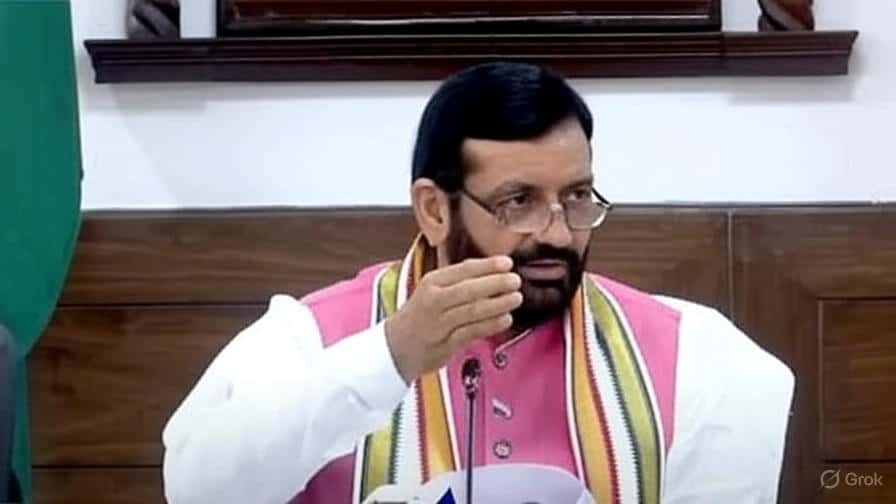

Haryana Bureaucrats: A Growing Divide with Elected Representatives
In the heart of Haryana’s political landscape, a troubling narrative is unfolding. Reports have surfaced that Haryana bureaucrats are increasingly disregarding the state’s elected representatives—MLAs, MPs, and even ministers. From ignored phone calls to denied meetings, the state’s bureaucracy appears to wield unchecked power, leaving elected officials feeling sidelined and powerless. This growing rift raises critical questions about governance, accountability, and the role of Chief Minister Nayab Singh Saini in addressing this crisis. Why is the state’s leadership silent, and what does this mean for Haryana’s democratic framework?
The issue has sparked curiosity among citizens and political observers alike. Are Haryana’s bureaucrats operating beyond their constitutional mandate? Is Saini’s silence a sign of weak leadership, or is he merely a figurehead shaped by central political forces? This article delves into the dynamics of this power struggle, exploring its implications for Haryana’s governance and the public’s trust in their elected representatives.
Haryana Bureaucrats Undermine Elected Representatives
The tension between Haryana’s bureaucrats and elected officials has reached a boiling point. MLAs and MPs, including prominent figures, have voiced their frustration over the bureaucracy’s dismissive attitude. Reports indicate that bureaucrats often fail to respond to phone calls or entertain requests from elected representatives, leaving them unable to address constituents’ grievances effectively. In some instances, MLAs have been denied entry to government offices, with officials reportedly claiming they are too busy to meet.
One incident, widely circulated on social media, involved an MLA confronting a senior official who dismissed their request for a meeting, stating, “I cannot answer calls from all 90 MLAs.” Such remarks highlight a deeper issue: a lack of respect for the constitutional authority of elected representatives. This sentiment is echoed by several legislators who feel that their role as the voice of the people is being undermined by an unaccountable bureaucracy.
Even union ministers from Haryana, who hold significant influence at the national level, report facing similar treatment. A senior BJP leader remarked, “It’s as if the bureaucrats believe they run the state, while we, the elected representatives, are mere spectators.” This growing disconnect has led to accusations that bureaucrats operate with little regard for the constitutional framework, treating elected officials as subordinates rather than partners in governance.
Why Are Bureaucrats So Bold?
The audacity of Haryana’s bureaucrats stems from a complex interplay of factors. First, there appears to be a lack of clear protocol enforcement. While formal procedures exist for bureaucrats to engage with MLAs, MPs, and ministers, adherence to these norms is inconsistent. A memo issued by a senior official in another state, Andhra Pradesh, warned of consequences for non-compliance with protocol, yet no such directive has been reported in Haryana. This absence of accountability emboldens officials to act independently, often ignoring the chain of command.
Second, the bureaucracy’s influence may be tied to the state’s political structure. Haryana’s governance has long relied on a strong administrative framework, with bureaucrats playing a pivotal role in policy implementation. However, this reliance has seemingly tipped the balance of power, creating an environment where officials feel untouchable. The lack of fear of constitutional repercussions further exacerbates the issue, as bureaucrats operate with impunity.
The public is left wondering: who truly holds power in Haryana? Are elected representatives, chosen by the people, being reduced to figureheads by an overreaching bureaucracy? These questions are fueling a growing sense of unease among citizens, who expect their leaders to address their concerns promptly and effectively.
Is CM Saini Silent or Powerless?
At the center of this controversy is Chief Minister Nayab Singh Saini, whose silence has drawn scrutiny. As the head of the state government, Saini is expected to bridge the gap between elected representatives and the bureaucracy. Yet, his apparent inaction has led to speculation about his leadership. Is Saini a strong leader capable of reining in the bureaucracy, or is he merely a portrait image of central politics, following directives from New Delhi?
Saini’s tenure has not been without challenges. Senior BJP leader and cabinet minister Anil Vij has publicly criticized the chief minister, claiming that “even ministers and MLAs are unhappy with the way the state government is functioning.” Vij’s remarks, made during a press interaction in Rohtak, suggest a broader discontent within the ruling party. He recounted an instance where another minister, Shyam Singh Rana, sought his help because officials were ignoring his directives.
Saini’s reluctance to address the issue head-on has led some to question whether he lacks the authority to confront the bureaucracy. Political analysts suggest that his leadership style, described by some as detached or overly reliant on central guidance, may contribute to the bureaucracy’s unchecked influence. “If the CM is not assertive, bureaucrats will naturally fill the power vacuum,” one observer noted.
The public is left asking: why hasn’t Saini taken decisive action? Is he unaware of the extent of the problem, or is his silence a calculated move to avoid rocking the boat? These questions underscore the need for clarity and leadership from the chief minister’s office.
The Impact on Governance and Public Trust
The growing divide between Haryana’s bureaucrats and elected representatives has far-reaching implications. For one, it hampers the ability of MLAs and MPs to serve their constituents. When elected officials cannot secure meetings or responses from bureaucrats, public grievances—ranging from infrastructure issues to welfare schemes—remain unaddressed. This erodes the public’s trust in the democratic process, as citizens begin to question the effectiveness of their elected leaders.
Moreover, the bureaucracy’s dominance raises concerns about accountability. In a democracy, elected representatives are accountable to the people, while bureaucrats are accountable to the government. When this hierarchy is disrupted, it undermines the principles of democratic governance. The lack of fear of constitutional repercussions among bureaucrats further exacerbates this issue, as they operate with impunity.
Social media platforms, including X, have amplified public frustration. One user remarked, “Haryana’s government is failing its people. MLAs, MPs, and ministers are helpless, while bureaucrats call the shots. Where is the leadership?” Such sentiments reflect a growing perception that the state’s governance is in disarray, with elected officials unable to assert their authority.
What Can Be Done?
Addressing this crisis requires immediate action from both the state government and the central leadership. First, clear protocols must be established and enforced to ensure bureaucrats respect the authority of elected representatives. Regular training and reminders of constitutional obligations could help realign the bureaucracy’s role.
Second, Chief Minister Saini must take a proactive stance. By publicly addressing the issue and holding non-compliant officials accountable, he can restore confidence in his leadership and signal that elected representatives are integral to governance. A high-level meeting with MLAs, MPs, and senior bureaucrats could be a starting point to bridge the gap.














